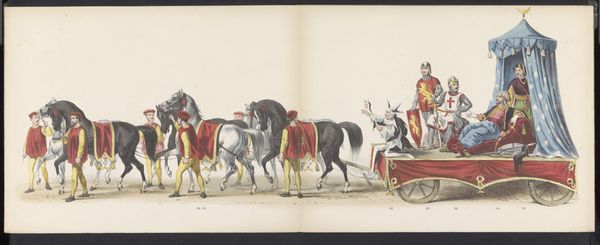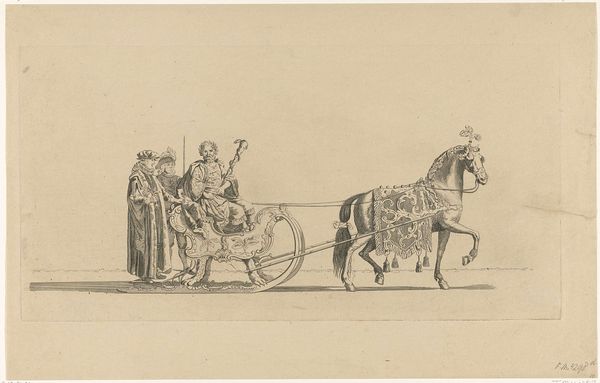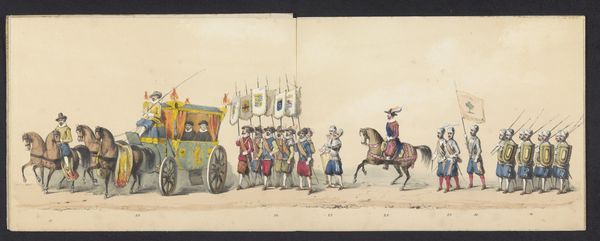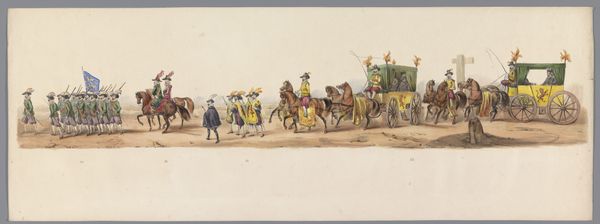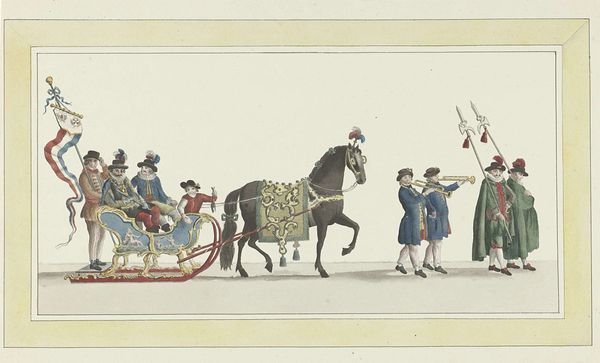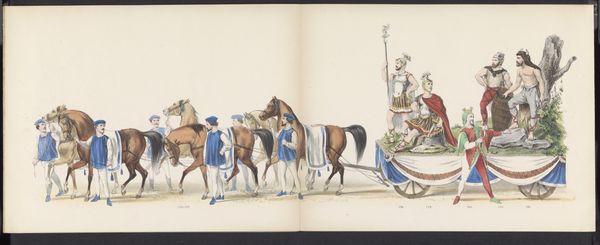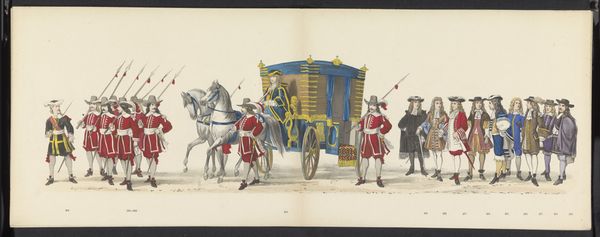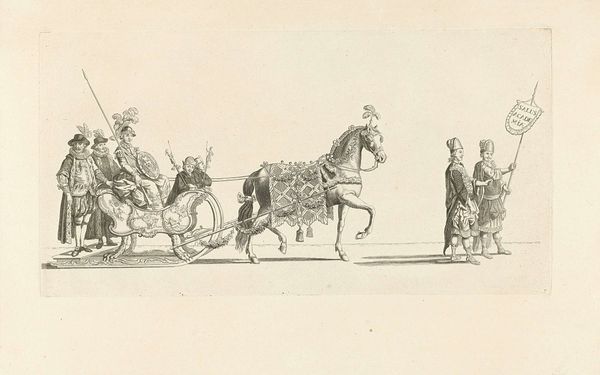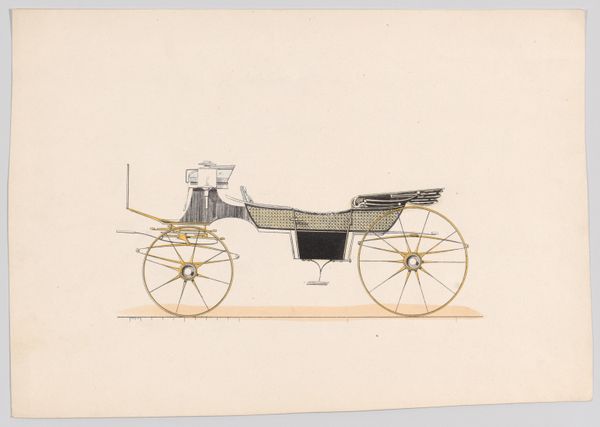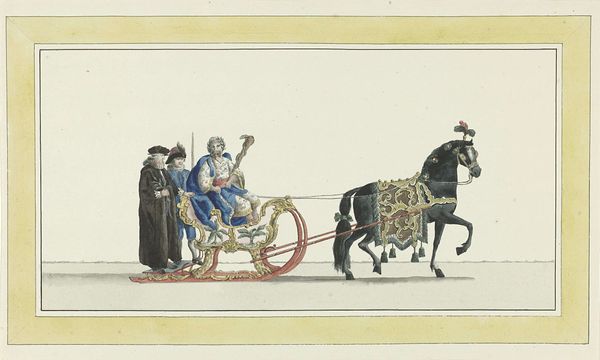
drawing, watercolor
#
drawing
#
watercolor
#
coloured pencil
#
romanticism
#
watercolour illustration
#
genre-painting
#
history-painting
#
watercolor
Dimensions: height 300 mm, width 480 mm
Copyright: Rijks Museum: Open Domain
Curator: The artwork before us is a watercolour illustration titled "Gekostumeerde optocht van 1841: wagen (blad XI)," or "Costumed parade of 1841: wagon (sheet XI)", created by an anonymous artist. It currently resides in the collection of the Rijksmuseum. Editor: The scene gives off a festive yet staged mood. It feels meticulously documented, capturing an idealized moment of pageantry with a certain self-conscious formality. What's striking is its muted palette and clear delineation between different components: horses with riders and the main wagon itself. Curator: Precisely. Note the artist's use of iconography. Each element feels carefully considered. We see not merely figures in costume but a curated display of historical symbolism through those garbs, colours and arrangement. Editor: Looking deeper, I wonder who this parade was meant to represent and celebrate. Was this meant as harmless festive practice, or was it more of a statement or cultural consolidation? How might power relations be enacted and challenged within that performance? The deliberate display invites scrutiny. Curator: It reflects an early-Romantic engagement with the past—a moment of Dutch national reimagining that found expressions in art, literature, and carefully constructed social rituals like these costume parades. The very act of recording this procession suggests its value as both a historical record and a symbolic representation of an idealized Dutch past. Note the use of colour as indicator. Editor: Yet, by visually isolating that parade within a vacuum, aren’t we, and wasn't the artist, also shielding the symbols it is meant to represent from questions? What ideologies underpin its imagery and are intentionally reproduced through them? What is romantic to one can be exclusionary to others. Curator: True. By immortalizing that ephemeral parade, the artist turned a moment into a enduring emblem, imbued with nostalgia and aspirations. Looking at those stylized details again and their careful rendering with watercolour brings us, I suppose, both aesthetic pleasure and symbolic understanding. Editor: Precisely, now the question would be—understanding what for whom? That, I would say, defines the artist's intent and political stance in recording that carefully displayed festivity.
Comments
No comments
Be the first to comment and join the conversation on the ultimate creative platform.
